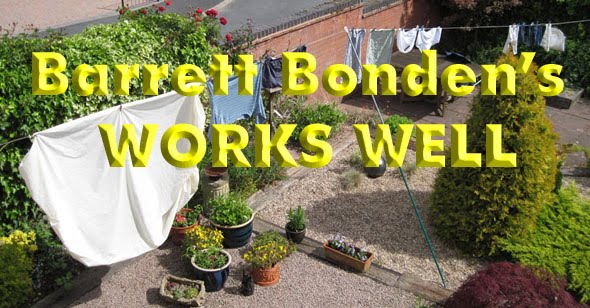 Denied any ability in the graphic arts, I am forced to look at the subject technologically. A wide viewpoint. Take the media: there are oils, acrylics, watercolours, ink, crayons, frottage (I love that one), bits of glued newspaper and no doubt much more. Surfaces embrace canvas, paper, board, wood and the sides of buildings. In the service of which are tools which range from sable hair brushes to small – perhaps big – trowels. Where do you start?
Denied any ability in the graphic arts, I am forced to look at the subject technologically. A wide viewpoint. Take the media: there are oils, acrylics, watercolours, ink, crayons, frottage (I love that one), bits of glued newspaper and no doubt much more. Surfaces embrace canvas, paper, board, wood and the sides of buildings. In the service of which are tools which range from sable hair brushes to small – perhaps big – trowels. Where do you start?Having encouraged Marja-Leena to write the definitive post on 3D scanning I emailed her a deceptively simple question: A subject for a painting occurs to you. How do you go about deciding on the appropriate technology for rendering that subject?
Needless to say M-L was far too fly to fall for that one. A Canadian might have, but not a Finnish-Canadian. For one thing she regards herself as a printmaker. She used to paint “years ago” (visit her blog archives) but these days she finds painting “comparatively boring”.
However, in the best tradition of people born in a cold country who go to live in another cold country she offers:
“One starts with some kind of an image then chooses the best way to present it, to fit it to one’s own sensibility" she says adding, as if she'd never heard of Jane Austen, " if that's the correct word."
There are no shortcuts in Finland or Canada. "That comes with some years of practice with different materials. I've been a printmaker for over 25 years, and I'm always learning new ways of image-making, which keeps me on my toes and interested.”
Memo: Must find out more about printmaking.


1 comment:
Love the British humour, though I don't always 'get' it. Feeling a mixture of embarrassed and appreciative of the unusual attention again - thank you, BB.
Thinking about technology in the graphic arts, printmaking is certainly uses far more than painting. Is that one reason why I like it more? I ask myself.
Post a Comment